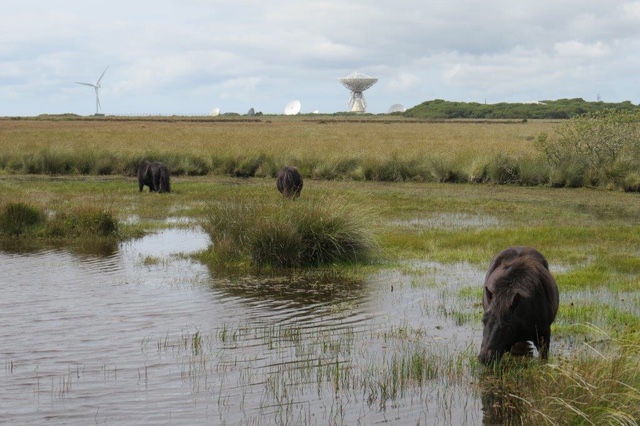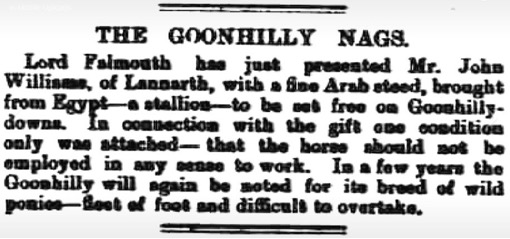History
For many people the bleak looking downs and moors of the Lizard are iconic parts of its landscape.
Due to their wild appearance it is easy to imagine the downs and moors simply as natural landscapes, but their character has in part been formed, and maintained, by thousands of years of human activity, principally through the grazing of livestock.
It is generally thought that by the Late Neolithic period (c3000BC to c2500BC) people had probably started to clear woodland vegetation on quite a substantial scale, perhaps to encourage grazing by certain wild and then domesticated animals, and to help favoured plants to grow. By the Bronze Age, settlements, enclosures and ceremonial complexes were being constructed in an increasingly open landscape created and sustained by farming.
Until the l9th century, upland, valley and coastal rough ground were important areas of west Cornwall’s farming landscape and used as part of the rural economy. Today, it is likely that few people are aware of the history of farmers taking sheep, cattle, ponies and goats on to the rough grazing, or of householders cutting furze (gorse), turf (peat), and ferns (bracken). Such sights were once commonplace on the Lizard.
The Goonhilly Pony
The Goonhilly pony was a smart sort of pony, strong in body but light of limb with a pretty head and nice length of rein. More akin to a New Forest pony than of an Exmoor and no doubt had the same stamina, even temperament and surefootedness as the modern native breeds.
Cornwall was one of the last places in Britain to see the introduction of the wheel. Prior to this, ponies or oxen transported goods on their backs or loaded onto skids which they pulled and Cornish folk were reluctant to change their ways. The routes across the county were rutted, uneven and ill suited to wheels, the ponies were therefore a popular choice and it would seem the breed flourished as a packhorse. (Exmoor Pony Webzine)

The Goonhilly Nags (The Cornishman, March 6th, 1884)
The Cornish Goonhilly pony (‘Gunellie’ ‘Goonyhill’ or ‘Goonhilly Nag’) is now extinct. It was bred out of existence through crossing with Arab blood. At the time it was considered that crossing would save it from extinction. In fact the progeny of the Arab were so popular that the best of the first crosses were all snapped up. This however signalled the end for the breed, nothing remained of the former Goonhilly, and the Arab crosses remaining were the weakest, and not tough enough to withstand the rigours of the exposed heath. (Dartmoor Pony Chronicle)

Devon & Exeter Daily Gazette. Jan 14th, 1889
To learn more about the Benefits of Conservation Grazing by the Ponies, please go to my blog on Conservation Ponies ‘part 2’, available next week.
For further information on the year in the life of our conservation ponies, please go to Diary of a Pony-patter.
References:
Natural Lizard
Native Pony
Newpaper Archive
Exmoor Pony Webzine
Published: Mar 2019
Author: Debbie Sea-Kay
